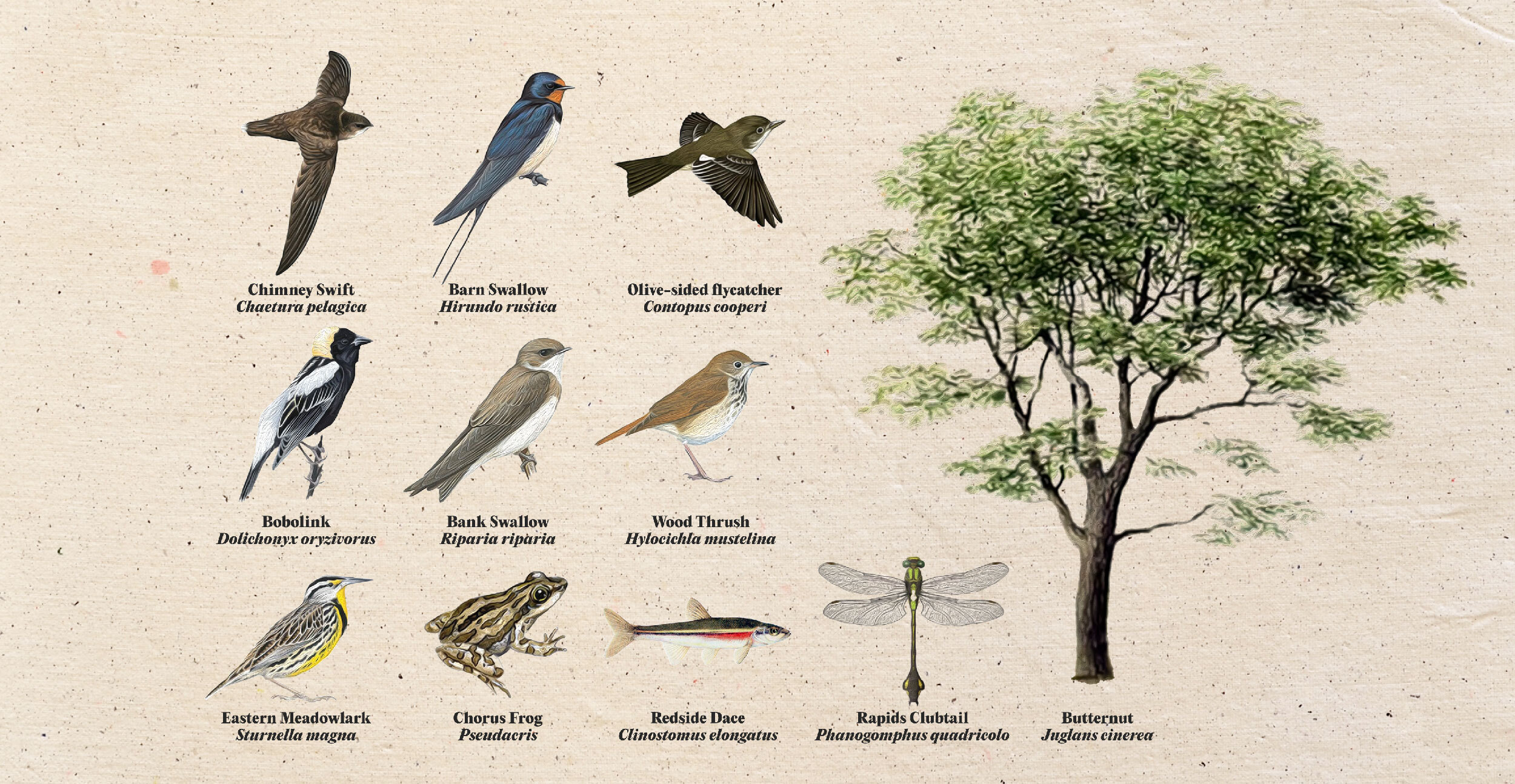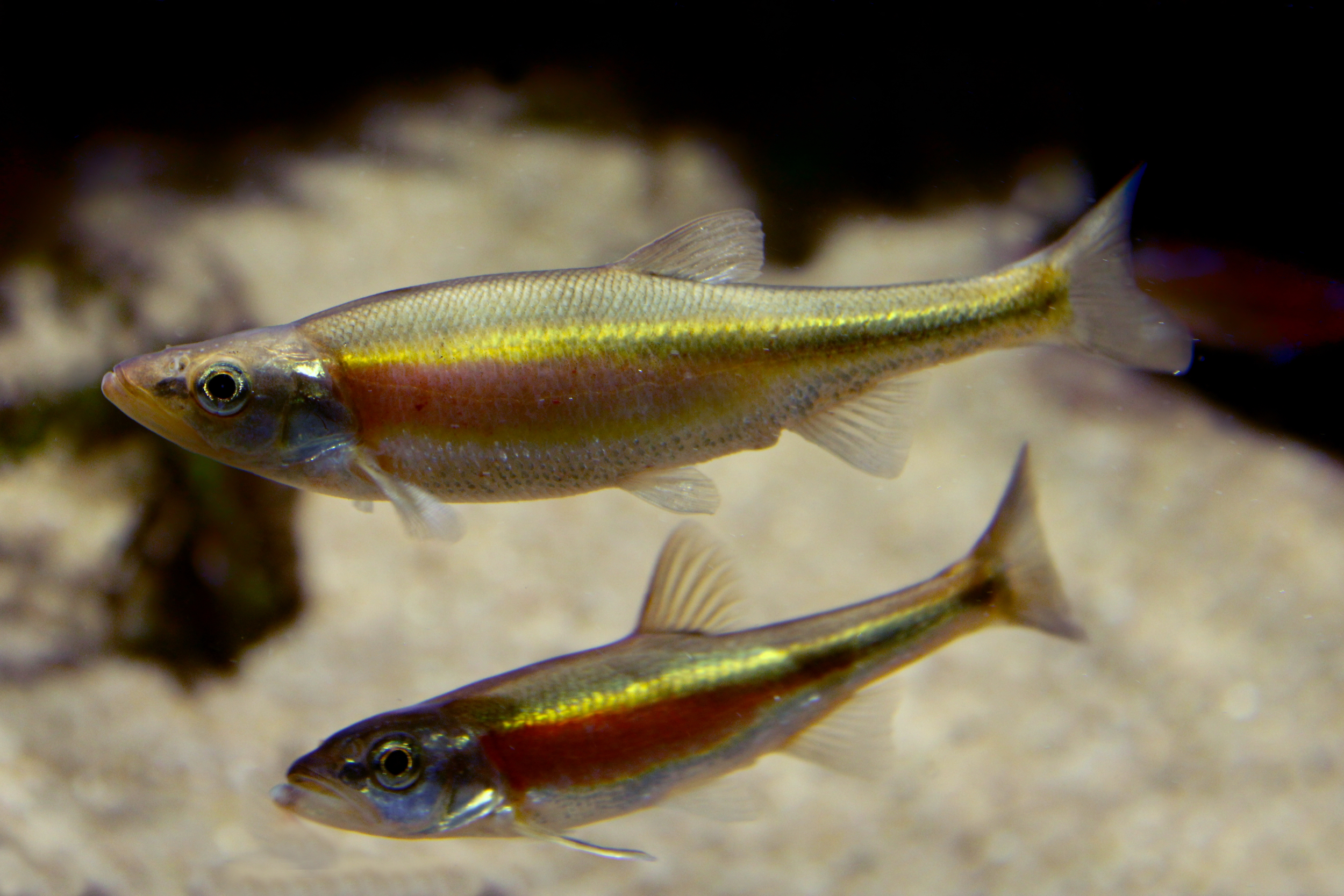
‘Afraid of the water’? Life in a city that dumps billions of litres of raw sewage into lakes and rivers
10 billion litres of sewage are dumped into Winnipeg’s lakes and rivers each year. Some...
The Ontario government is looking at watering down protections for an endangered minnow found in Greater Toronto Area streams that would be crossed by the controversial Highway 413.
The redside dace, a silvery little fish with a red stripe, hunts insects by leaping out of the water. They’re an important part of their ecosystem, helping manage populations of the insects they eat, like mosquitos. Once plentiful in streams around Lake Ontario, the quickly vanishing redside dace is especially sensitive to changes in its environment, like those wrought by the climate crisis or urban development. For that reason, they’re seen as indicators of larger problems in a watershed: if they start dying, it’s a sign that other species might soon be in trouble too. The Ontario government’s last assessment of the species in 2020 concluded it was at “imminent” risk of being wiped out in the province.
The minnow is also at the heart of a federal review of Highway 413, a flagship Doug Ford government project. If built, the 60-kilometre highway would ring around the suburbs north and west of Toronto, carving through conservation land, prime farmland, 220 wetlands, 85 waterways, Ontario’s Greenbelt and the habitats of 11 species at risk, including the redside dace. The federal government decided in 2021 to subject Highway 413 to an impact assessment, which could determine whether Ontario is allowed to go ahead with its construction. The project hasn’t moved forward much since — the provincial government has yet to file the initial report required to formally start the federal review.
The Ontario government is now proposing changes that would cut protections to some redside dace habitat, a move critics say will hasten the minnow’s decline. It comes as the province is rewriting legislation at a furious pace in what it has presented as efforts to boost construction of housing and infrastructure projects. It’s also the province’s latest move in a series of changes weakening protections for species at risk.
“I think the government would be quite happy if the species disappeared,” Don Jackson, a professor at the University of Toronto’s department of ecology, who studies aquatic ecosystems.
“For the government, it’s not a convenient species.”

Ontario’s Environment Ministry didn’t answer detailed questions from The Narwhal about the evidence backing the proposal, and how it’s balancing development and the need to protect species at risk. But in the online posting, the ministry said the plan would “focus habitat protections” on areas that are most likely to support redside dace in the future. The province’s public consultation on the proposed changes is open for feedback until Feb. 20.
In 2021, the auditor general found the Environment Ministry has never denied a permit to harm species at risk and grants most automatically, a practice that started under previous governments and was continued by Ford’s Progressive Conservatives. It also doesn’t do any inspections to verify companies are following conditions on their permits.
Right now, Ontario’s Endangered Species Act — the main provincial law protecting imperiled plants and animals — prohibits anyone from damaging “occupied” habitat, or places where redside dace have lived within the last 20 years. It also offers the same protection to what’s called “recovery” habitat, or places where the minnow could be re-established someday. The goal of the law is not just to slow the decline of species at risk, but to help their numbers rebound.
The proposed changes, which the government posted for public feedback in late December, would peel those protections back. Only habitat occupied by redside dace within the past 10 years would qualify, and “recovery” habitat would be limited to streams and waterways directly adjacent to those where the minnow has lived within the last decade.
Jackson said the move amounts to writing the minnow off when it needs help the most. There has been some success breeding redside dace in captivity at the University of Windsor, raising researchers’ hopes of re-introducing them to creeks and streams. The province has also put hundreds of thousands of dollars towards projects aimed at restoring redside dace habitat. But the species can’t be re-introduced if the places where it used to live are developed or destroyed.
“It’s not a science-based decision,” Jackson said.
The charity Ontario Nature has raised similar concerns: “The only possible interpretation is that the amendments are geared towards facilitating development at all costs,” the group said.
Over a century ago, settlers recorded finding an abundance of redside dace in pretty much every stream in southern Ontario. They were also a common sight in parts of the United States around the Great Lakes basin. As the region’s cities and suburbs expanded outward in the last 50 years, bringing declines in water quality and more pollution, many of the minnows have winked out or retreated into smaller areas. A few fragmented populations of the species also persist in the U.S., though it has vanished from streams in Iowa and Maryland.
As construction in Ontario boomed in the 2010s, local numbers of the minnow plummeted by half. The Ontario population of the redside dace now lives mostly in the Greater Toronto and Hamilton Area — including the Credit and Humber rivers, which would be crossed by Highway 413. They also live in tributaries of the Holland River, which would be crossed by another Ford government project called the Bradford Bypass. These fragile but persistent schools have slowed or halted more than a few large developments in the last few years.
At the same time, Jackson said, scientists have had trouble getting permits from Ontario’s Environment Ministry to study the species and gather evidence showing where it might still be present. So streams listed as empty of redside dace for over a decade might actually not have been properly investigated, he said.
“We’ve got this situation where the government’s actually cutting in half the length of time when an area would be considered to be occupied,” he said. “But at the same time, it’s also not allowing sampling to be conducted in those areas. So we really don’t know what the status is and whether the species is present or not.”
The Ministry of the Environment didn’t answer questions about how many permits it grants to scientists studying redside dace, or what evidence it relied on when preparing the plan. If the Ontario government decides to give the changes a green light, it’s not clear how that might affect the federal impact assessment of Highway 413.
The Impact Assessment Agency of Canada, which is responsible for the federal review of Highway 413, did not answer a request for comment from The Narwhal by deadline. Neither did the office of federal Environment Minister Steven Guilbeault.

The Ontario government is also proposing a tweak to protections for the butternut tree, another species at risk along the route of Highway 413. People or companies proposing some types of work that would harm the tree have to submit a report from an expert on the health of the butternut trees that would be affected. Right now, the Environment Ministry takes 30 days to review that report and examine the trees, if needed — but the proposed change would eliminate that waiting period, meaning builders could begin work that could harm the trees before the ministry has time to review the report’s findings and method.
Last year, Ontario’s auditor general found the government had failed to pen a plan to protect the butternut tree, among other species.
A third change proposed by the ministry would exempt mining companies from having to follow most endangered species rules when they build trails to access mineral exploration sites — places where prospectors are looking to see if there’s anything in the ground worth mining. Most of the activities mining companies do while they’re exploring a site are already exempt from endangered species rules.
Ontario Nature said the proposed changes are “another example of the Government of Ontario’s relentless push to prioritize development over environmental protection.”
Get the inside scoop on The Narwhal’s environment and climate reporting by signing up for our free newsletter. On a warm September evening nearly 15...
Continue reading
10 billion litres of sewage are dumped into Winnipeg’s lakes and rivers each year. Some...

Court sides with Xatśūll First Nation, temporarily halting Mount Polley mine waste expansion

Break out the champagne: Emma’s storied life and leadership in journalism has earned her the...
